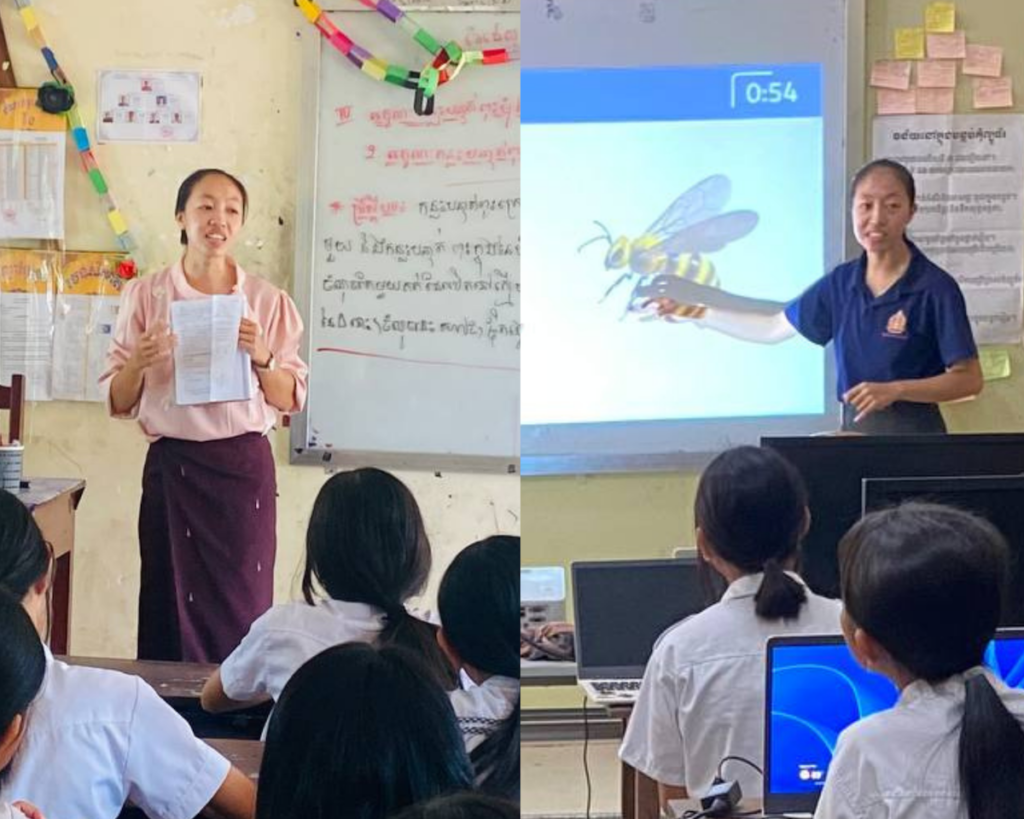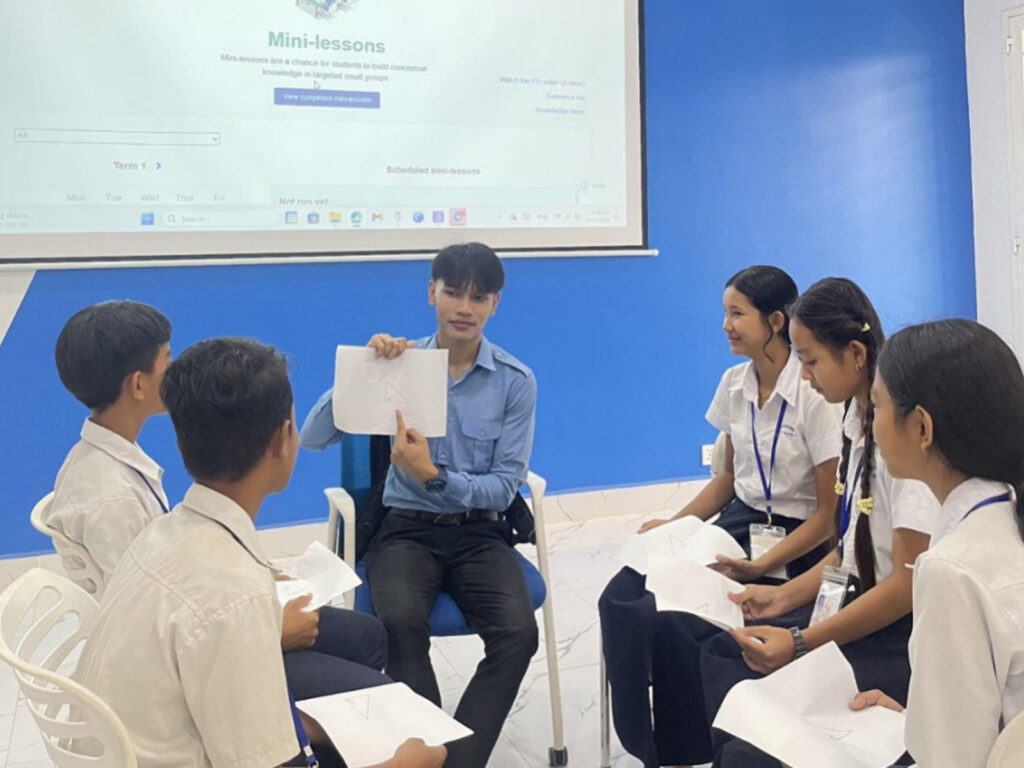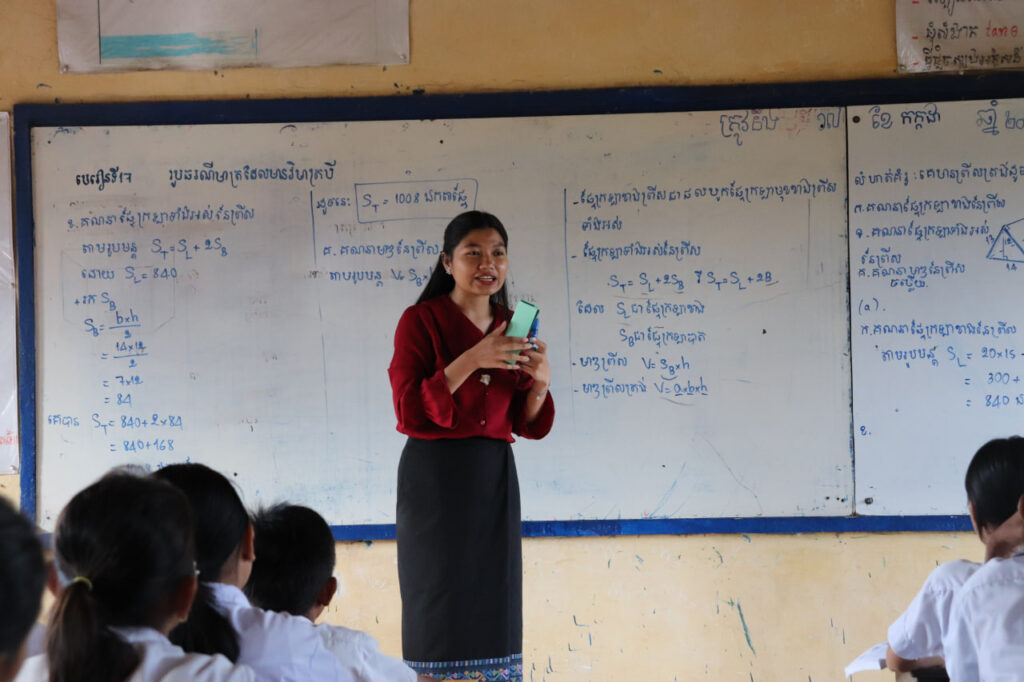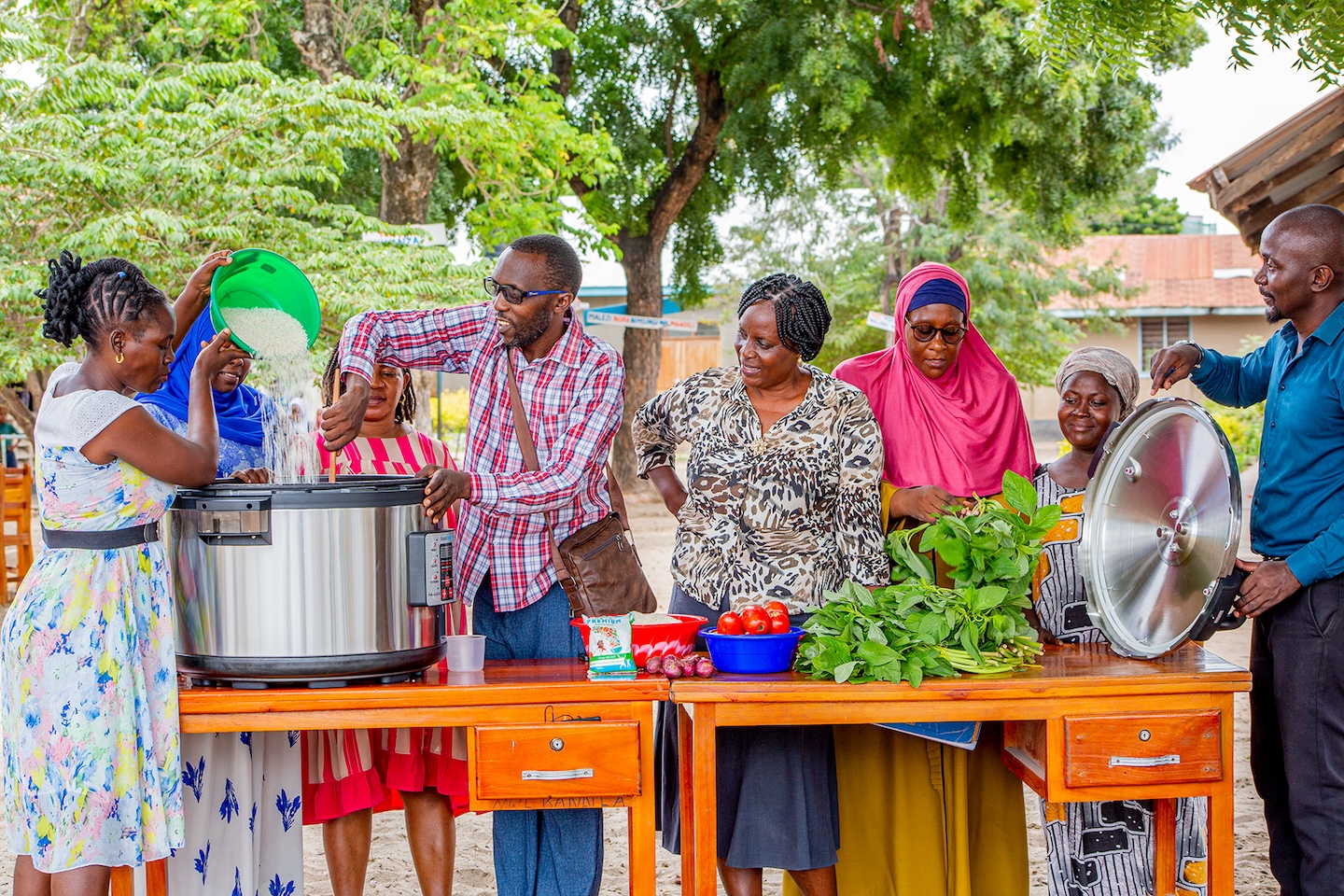Over the past year, Teach For Cambodia has been piloting the High Touch High Tech (HTHT) approach in government secondary schools, combining AI-powered personalized learning with targeted, teacher-led instruction. In partnership with the Learning Generation Initiative housed at the Education Development Center, 13 teachers implemented this model with approximately 2,200 students across Phnom Penh and Kandal provinces. Our aim was to explore how this innovative approach could be adapted in resource-constrained settings and what meaningful shifts it might spark in the way teachers teach and students learn. Below, we share reflections from three teachers at the forefront of this work in Cambodian classrooms.

From lecturers to learning facilitators
The implementation of the HTHT approach, particularly through the use of the Maths Pathway platform, has led to significant shifts in teaching practices across participating schools. Teachers have moved from traditional lecture-based models towards facilitation and using real-time data from the platform to target support more effectively. With classrooms that can reach up to 50 students with varying academic capabilities, this can make a huge difference to students’ engagement and learning.
Lesson planning is now more focused on interventions such as targeted mini-lessons, structured peer tutoring, and one-on-one support. In a targeted mini-lesson, the teacher uses data from the platform to form a small group of 6-8 students who are ready to learn something similar together, and then provides 20-25 minutes of explicit teaching to that group. For one-on-one support, teachers identify students who are struggling—particularly those stuck on a module after multiple attempts—and provide personalized guidance to help them move forward. Moreover, personalized assessments have replaced standardized testing in HTHT classrooms, allowing teachers to better track individual progress, provide timely feedback, and celebrate students’ growth in meaningful ways.
“Real-time data from the system has really changed the way I support my students. In my previous teaching experience, I honestly didn’t know how many of them were falling behind or exactly where they were struggling. Now, I can see clearly who needs help and in which areas. That allows me to respond right away—whether it’s a quick one-on-one check-in or pulling a small group together for a mini-lesson. It’s also made me rethink my role. Instead of always directing the class, I’ve started to act more as a facilitator—someone who guides students based on their own progress. It feels more responsive, and I can see the difference in how students engage and grow.”
– Sokhao, a second-year math teacher at Puk Russey High School, Kandal Province

Students taking ownership of their learning
At the start of the year in one teacher’s classroom, approximately 95% of the students had little to no prior experience using computers or online learning platforms. Many struggled with basic digital tasks, such as how to hold a mouse or navigate a screen. However, with consistent exposure, clear classroom routines and scaffolded support, students quickly built both confidence and competence.
As students became more comfortable with digital tools, they also began to take greater ownership of their learning by working more independently, collaborating with peers and approaching challenges with greater resourcefulness, shifting classroom culture.
“I’ve noticed a big shift in my students’ confidence and familiarity with using technology, and that change has really transformed their study habits and the classroom environment. At the start of the year, most of my students didn’t even know how to turn a computer on or off, let alone use Google tools or navigate the Maths Pathway platform. It was overwhelming for many of them. However, through consistent interventions—like setting clear classroom norms, reinforcing routines, teaching them to be independent learners, and doing regular bi-weekly reflections and progress checks—I’ve seen real growth. Now they’ve become confident and self-directed learners. They take charge of their own learning—working at their own pace, completing tasks independently, and checking their progress after each lesson. I’ve also noticed how much more they collaborate with each other, whether it’s helping a classmate navigate the platform or sharing how they solved a math problem. What stands out the most is their mindset—they’re not as afraid to make mistakes. They keep trying, learn from their errors, and show real grit.”
– Kimchhou, a first-year math teacher at Sampeou Poun High School, Kandal Province

High tech supports high touch
Perhaps the clearest insight from teachers this year is that the high-tech component strengthens, not replaces, teacher-led instruction. By helping students build stronger foundations in mathematics, students are better prepared for class, grasp concepts more quickly and engage more deeply during class time.
“I’ve had two very different experiences teaching math. In my first year, before I started using the HTHT model, it was really challenging. My students were at very different levels, and many of them were far below their grade level. It was difficult to move forward with the lesson because I was constantly trying to fill foundational gaps. This year, after integrating the HTHT model, I’ve seen a big difference. Students are building a stronger foundation through the high-tech component, which allows me to teach the content much more effectively and efficiently in the high-touch sessions. What excites me most is that some students are now getting to a point where they can apply their understanding by creating their own exercises and explaining their thinking to others. It’s also helped increase student mastery. They learn key concepts during our high-touch sessions, and then reinforce and practice those concepts independently through the high-tech platform.”
– Sreynith, a second-year math teacher at Hun Sen Ksach Kandal High School, Kandal Province

Looking forward
These reflections highlight how the HTHT model is not just about introducing new tools but is redefining what teaching and learning can look like in Cambodia. By personalizing instruction, deepening student engagement, and equipping teachers with data-driven insights in real-time, we see the emergence of more responsive classrooms where educators feel empowered and students take ownership of their learning.
As we enter the next phase of our partnership with the Learning Generation Initiative at the Education Development Center, we will continue working with returning teachers to explore how this model can be adapted, made more cost-effective, and scaled sustainably for Cambodia’s public education system.



